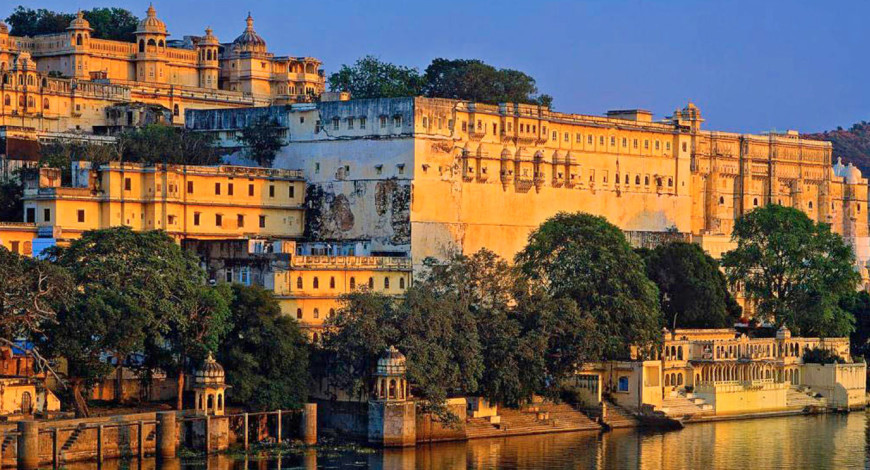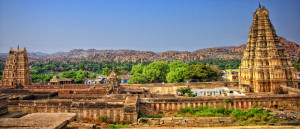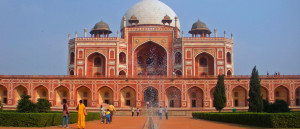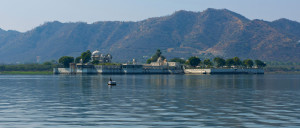New Year in India
The tour in North India visits three princely capitals in the heartland of the Mughal Empire – Delhi, Agra and Fatehpur Sikri – and a number of great Rajput fortress cities in Rajasthan. The South Indian program takes you on a grand journey visiting many of India’s most important and spectacular Hindu, Jain, Buddhist, and Islamic, monuments.

Mughals, Rajputs & Villages: The Cultural Heritage of North India
Join Professor Bernard Hoffert, former World President of the International Association of Art-UNESCO (1992-95), as he leads this tour to India.
This tour explores the fusion of Hindu and Islamic cultures at Mughal monuments such as Agra’s Red Fort, Shah Jahan’s exquisite Taj Mahal, and Akbar the Great’s Fatehpur Sikri. We also enjoy the opulence and grandeur of Rajput fortress palaces, fusing indigenous Hindu and Mughal styles, at Jaipur, Bijaipur, Udaipur, Jodhpur, Jaisalmer and Bikaner. From their powerful walls,
brilliant glass-walled staterooms, exquisite garden courts and lustrous pavilions the Rajputs dominated teeming cities. At Chitor we explore the grand deserted fortress from which opium-crazed Rajput cavalry thrice charged better-equipped Muslim forces whilst their women committed ritual suicide.
We cruise past exquisite island pleasure pavilions on Lake Pichola at Udaipur and explore merchant houses in Jaisalmer and Bikaner with their intricately carved window screens. We visit the Hindu temples of Holy Pushkar, grand Mughal mosques like Delhi’s ancient Qutub Minar, brilliant red or white royal tombs like Agra’s Itmad Ud Daula and Akhbar’s tomb at Sikandra and vast, richly decorated Jain Temples at Ranakpur and Jaisalmer. We wend our way through teeming bazaars and explore Rajasthan’s vibrant folk culture manifest in its village life, and its fine music and dance, intricate jewellery and brilliantly coloured textiles. We ride stately elephants and take a 4WD through one of Rajasthan’s best nature reserves to view blackbuck, an endangered species of antelope.
Special features of this tour are accommodation in fine heritage hotels in old palaces, fortresses and pretty merchant houses in Jodhpur, Kumbhalgarh, Bijaipur, Bikaner, Khimsar and Jaipur, and the delights of delicious Indian cuisine.
For more on this tour …….
Ancient Kingdoms and Empires of Southern India
 Professor Bernard Hoffert introduces the epic history of Southern and Central India from ancient small kingdoms to great Hindu, Muslim and British empires.
Professor Bernard Hoffert introduces the epic history of Southern and Central India from ancient small kingdoms to great Hindu, Muslim and British empires.
This grand journey visits many of India’s most important and spectacular Hindu, Jain, Buddhist, and Islamic, monuments. At Mahabalipuram, ancient port of the Pallava kings we explore the famous Shore Temple and unique rock-carved temples called the ‘Five Rathas’. We visit ‘The Great Living Temples’: the Airavatesvara Temple at Darasuram, the Gangaikonda Cholapuram and the Brihadeshwara Temple of Thanjavur, brilliant achievements of Chola architecture, sculpture, painting and bronze casting. We view the priceless Chola bronze masterpieces in Chennai’s and Thanjavur’s museums. Thanjavur’s Saraswati Mahal Library holds rare palm leaf manuscripts. The Hoysala Dynasty Channakeshava Temple, Belur and Hoysaleswara Temple, Halebid are covered with intricate carvings of gods, celestial beings, and humans; at all Hindu temples we enjoy the rich, colourful religious ritual and dress of temple-goers. A special highlight is the UNESCO World Heritage site of Vijayanagar (Hampi) capital of a great Hindu Kingdom, which includes forts, palaces, temples, shrines, gateways and stables. In North Karnataka we encounter the finest examples of Chalukyan art and architecture, including the famed Temple of Virupaksha and the red sandstone rock-cut cave temples of Badami.
We enjoy Sravanabelagola’s equally important huge statue of the Jain enlightened being and Srirangapatnam, Tipu Sultan’s fabulous palace and mosque. In Mysore you’ll delight in the Wodeyar Maharajas’ florid palace, blending Hindu, Muslim, Rajput, and Gothic elements. Kochi’s fascinating mix of East and West includes St. Francis’ Church, Fort Cochin, and the 16th-c. Portuguese Mattancherry Palace with murals depicting the Ramayana. In Hyderabad and Golconda you’ll encounter masterpieces of Islamic architecture. Everywhere we wander through lively markets like Thanjavur’s vegetable market. You’ll enjoy the tasty cuisine of Tamil Nadu, Kerala and the Deccan, drive through extremely varied landscapes from arid plains to tropical forests, and cruise Kerala’s backwaters watching busy river life.



